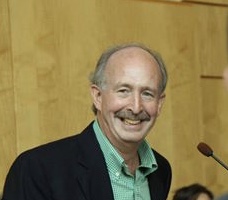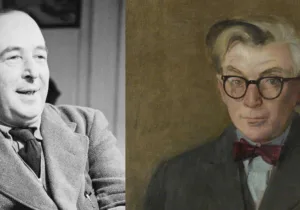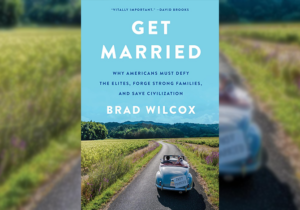Students of American political history remember that anti-Catholic bigotry was a major obstacle facing John Kennedy’s 1960 presidential bid. They also remember that Kennedy’s September 1960 speech to the Houston Ministerial Association was a successful “soft” strategy reassuring American protestants that Kennedy’s Catholic convictions would not influence his presidential decision making. Less well-remembered, however, are the hard strategies JFK embraced to silence his critics, both during the 1960 election and in its aftermath. That story is the jumping-off point for historian Paul Matzko’s insightful and timely recent book, The Radio Right: How a Band of Broadcasters Took on the Federal Government and Built the Modern Conservative Movement.
As Matzko retells the history, a group of nationally known fundamentalist radio preachers was the accelerant fueling Kennedy’s fear of losing West Virginia, and the 1960 general election. In response, Kennedy formed an alliance with the National Council of Churches (NCC) and organized labor to silence—yes, “cancel”—conservative radio voices. Thus began, Matzko concludes, “the most successful episode of government censorship in America in the past half-century.” Matzko retells this story in fascinating detail and, in doing so, upends traditional explanations for the rise of modern American conservatism. This decade-long assault against the “Radio Right” was an intentional and sophisticated game plan unleashing, Matzko argues, “a sense of grievance that still persists on the Right… The suppression of the Radio Right cemented their belief… that the federal government was actively hostile to conservatism.” In the 60 years afterward, these resentments would swell into a tsunami whose legacies are reflected in today’s headlines.
Matzko begins his book with a survey of the historiographical landscape of both the Kennedy administration and the rise of modern conservatism. With respect to the former, Matzko discusses four stages in the evolution of Kennedy historiography. Immediately following JFK’s assassination, and bracketed by the popular Camelot narrative, sympathetic journalists and staffers touted Kennedy’s positive accomplishments. In the cynical years following Richard Nixon and Watergate, the Kennedy historiography took on a less hagiographic tone. A third, post-revisionist wave of scholars in the 1990s sought to balance the negative assessments of revisionist scholars by arguing that, although Kennedy’s presidency was characterized by excesses, these need to be judged against JFK’s growth toward greatness. Matzko self-identifies with a fourth “neo-revisionist” school that maintains “inasmuch as Kennedy ‘grew towards greatness’ it included a growth in his willingness to abuse executive power in order to advance his legislative agenda” and to ensure his reelection.
Matzko’s subsequent historiographical survey of post-World War II American conservatism includes a discussion of, among others, Daniel Bell, Richard Hofstetter, Alan Brinkley, Thomas Frank, Nancy MacLean, and Kevin Kruse. Here a key conclusion is that recent historical interpretations of the conservative movement mistakenly see its origins in the manipulation of “simple-minded dupes” by corporate interests. As his subsequent discussion confirms, in the early 1960s it was “in leafy suburbs filled with families of white-collar professionals” that grassroots conservative activism thrived Yet—and this is central to Matzko’s thesis—“there is no sui generis idea or issue to which we can link the rise of the Right.” It is at this point that Matzko identifies the linchpin of his argument. Most historiographical accounts of the rise of modern conservatism focus on the demand for conservative ideas, “making outrage over new social or political developments the key to understanding how potential conservatives became actual conservatives.” To be sure, in post-war America conservatives did respond to issues such as communism, the Civil Rights Movement, and the sexual revolution, but—Matzko argues—this fixation on demand—that is, these “hot button” issues—ignores how the supply of conservative ideas affected the rise of conservative activism. Ideas, Matzko reminds us, don’t just float in a vacuum. They need a voice, and a method, for transmission. Prior to the twentieth century, this transmission took place via print. With the advent of radio, the transmission of ideas expanded exponentially. In the 1930s, for example, Franklin Roosevelt’s “fireside chats” widely advanced progressive ideas associated with the New Deal. With the proliferation of independent radio stations in the 1950s, conservatives jumped on the radio bandwagon and generated a wave of grassroots activism that would change America.
The “origins myths” of modern American conservativism usually identify William Buckley and Barry Goldwater as its progenitors. However, Matzko convincingly argues that Goldwater was a product of the grassroots conservative movement, and while Buckley was an ideational architect, it was the band of fundamentalist radio preachers, notably New Jersey-based Carl McIntire and Oklahoman Billy James Hargis, “who were the construction company that hired the workers and assembled the structure” of modern conservatism. One statistic stands out in this interpretation: In 1964, Buckley’s flagship National Review had 73 thousand subscribers. In that same year, 20 million listeners would tune in to each of Carl McIntire’s Twentieth Century Reformation Hour broadcasts.
Early on the Kennedy administration determined that the threat posed by these conservative radio broadcasters was more serious than that posed by print journalism. Fortuitously for the president, the Radio Right also presented a serious challenge to the National Council of Churches. In the aftermath of the modernist-fundamentalist battles earlier in the twentieth century, conservative Christians were pushed to the periphery of American religious and cultural life. However, by the early 1960s the growing popularity of fundamentalist radio threatened the hegemony of the Protestant mainline establishment as conservative parishioners pushed back against their theologically and politically liberal clergy and as radio preachers, like McIntire and Hargis, directly “exposed” and targeted the NCC’s agenda. The NCC and Kennedy administration thus became a tag team to take down the voices of conservativism while, Matzko emphasizes, “claiming to be champions of religious toleration.” Indeed, “the central irony in this story is that a coalition of liberal advocacy groups had used deeply illiberal methods to combat illiberalism.”
The Kennedy administration’s other ally in its project to silence the Radio Right was organized labor. Along with his two brothers, Walter Reuther, president of the United Auto Workers, had a special animus toward Billy James Hargis as well as the John Birch Society’s Robert Welch and the Christian Anti-Communism’s Crusade’s Fred Schwarz. The result was the 24-page “Reuther” memorandum to the Kennedy administration that spelled out the threat posed by the Right along with a three-step plan to “contain the radical right… and in the long run reduce it to its historic role of the impotent lunatic fringe.” The first step, never implemented, proposed that Attorney General Robert Kennedy add conservative groups to the government’s list of subversive organizations. The second and third steps, which were implemented, outlined using the Internal Revenue Service and Federal Communications Commission to stop the flow of money to conservative groups that, the Reuther memo concluded, “should be dammed to the extent possible.”
Through its “Ideological Organizations Project,” the IRS had been using its auditing authority to squash individuals and groups since the anti-Red hysteria of the 1950s. Matzko spells out that the Kennedys found “a reliable ally at the IRS… [and] simply took the weapons used against the Far Left and brought them to bear on the Far Right.” Matzko speculates that this illicit use of the IRS was “likely illegal,” and it ultimately failed in its goal of silencing conservatives, notably Billy James Hargis. Nevertheless, Radio Right broadcasters paid a steep price in declining contributions, intimidated donors, and costly legal battles.
Where the Reuther-Kennedy IRS strategy stumbled, the Kennedy administration’s embrace of the FCC Fairness Doctrine proved much more successful. Very simply, the gist of the Fairness Doctrine required that any radio station airing one political viewpoint (or controversial issue) had to make available equal time for a rebuttal from the other side. While the original rationale for the Fairness Doctrine was couched in the context of protecting the public interest, Matzko points out that the evolving rules of the Fairness Doctrine “were designed to advance liberal speech while placing limits on the unbalanced expression of conservative speech.” By the time of JFK’s assassination, the extent to which the president had gone to silence his conservative opponents was, in Matzko’s words, “really quite shocking… [representing] one of the greatest acts of bureaucratic strong-arming in American history.”
By 1965 the National Council of Churches took on primary responsibility for the counter-Radio Right campaign. The mid-1960s marked both the apogee of mainline Protestant membership and the start of the mainline’s steady decline, both in membership numbers and dominance, as American evangelicals began their reemergence from cultural exile. Matzko points out that in the mid-1960s the NCC was “being dwarfed on the airwaves by the likes of McIntire.” Focusing on membership numbers alone misses the reality that “conservative broadcasters had huge audiences, large budgets, and a great deal of credibility with their listeners.” Therefore, in the second half of the 1960s liberal groups, spearheaded by the NCC, intensified their campaign of using the Fairness Doctrine to silence the Radio Right.
Matzko’s in-depth discussion of the NCC’s blueprint for shutting down conservative radio is certainly disturbing, highlighting, among other things, the saga of Mississippi radio station WLBT and the more famous—or infamous—case of Carl McIntire’s WXUR in suburban Philadelphia. These episodes, and the cast of characters associated with them—including the United Church of Christ, the Greater Philadelphia Council of Churches, Wayne Phillips, John Norris, Arthur Larsen, and others—are important, yet neglected history. Further, Matzko’s thesis finds support in other engaging discussions of long-forgotten and relevant events and issues associated with—for example—the 1962 Polish Ham Boycott, housewife sponsored anti-Communist Boycott Card Parties, the 1962 Trade Expansion Act, and the 1963 Nuclear Test Ban Treaty.
By the early 1970s, the heyday of the Radio Right had passed as the empires associated with the likes of McIntire and Hargis crumbled largely under the weight of the Fairness Doctrine onslaught. While the Kennedy-NCC-organized labor campaign against major right-wing broadcasters accomplished their goal of muting conservative voices, a conservative grassroots had been organized and prepared the way for the emergence of a more consequential conservative movement in the years ahead. As for the Fairness Doctrine, it was abolished in 1987 by a 4-0 vote of the Federal Communications Commission. Although there have been attempts since to resurrect it, Matzko’s assessment is spot-on: “The Fairness Doctrine was a mess—arbitrarily applied, ill conceived, and rooted in an inchoate idea of the public interest.” While it would be quite a stretch in any sense to think of Carl McIntire and Billy James Hargis as heroes in this history, these pioneering radio fundamentalists set in motion events that would transform both American political and religious life.







 Sponsor a student for Christianity & National Security 2024
Sponsor a student for Christianity & National Security 2024